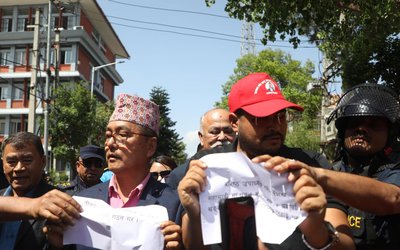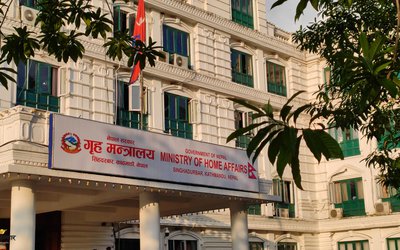More on News





Despite many identities as a renowned world heritage city, Kathmandu, to women, has an awful downside. Some like to describe its notoriety in terms of three S’s: the city never sleeps, has no security and looks selfish. ‘No security’ tops the problems women see in the city.
Obviously, half of the sky of Kathmandu is covered by women, regardless of their involvement in various occupations and capacities. A majority of these women use public transportation. The number of women working in very high profile organizations and without having to commute by public vehicles is very nominal.
Since early in the morning women here are seen using the public transportation such as Tempos, Minibuses and Microvans.
“Three seats reserved for women” is a platitude one can read inside these public vehicles. “One seat for the disabled.”
The irony of these writings on the walls of the vehicles is that these seats are up for grabs of anyone who is able-bodied. Neither are these seats occupied by women nor are they enough for them, even if they were allowed the seats.
You might have experienced that public transportation and traffic regulations are also ridiculous. Currently, in a few places such as main traffic junctions like Thapathali, Tripureshowr, and Singhadarbar, traffic police has forbidden the public vehicles to open their doors. Most of these vehicles are full and more crowded during office times in the mornings and evenings. This is more painful during the winter season and the traveling time of so-called VIPs.
No authority seems to be really concerned about the plight of women in these times, not even the women's rights advocates.
Gender-based violence occurring during the public is rampant throughout the country, and more so in Kathmandu.
Generally, women are seen carrying heavy bags, holding children or senior people and using more formal dresses (kurta-salwar, saree). In addition, they are fully occupied with their duties and responsibilities at home where they have loadful of work waiting for them. It means they are in stress.
Meanwhile, they encounter with various forms of violence in public vehicles. Drivers and conductors hurl verbal abuse on them and create a hassle regarding fares and discount cards. It is easy to see women are standing, holding on to the doors and ceilings despite their height, bags, or babies.
They do not have a choice but to adjust with other people. The meaning of such ‘adjusting’ often implies, however, that males may be touching their body parts, even private parts, and thrusting in their shoulders or front sides on these vulnerable women.
Another frustrating scene is catching public vehicles in stations. Men usually jump and occupy the seats but women are waiting and waiting and get on vehicles but find no seats. On top of that, if the women look a bit aged, even a small conductor challenges her that her student ID card should be fake.
The government and many INGOs, NGOs, and UN agencies are spending huge amounts of money and using big, broad slogans to end gender-based violence, concentrating mainly in Kathmandu, in meetings at hotel Everest, or Himalaya.
But they hardly discuss about women who are users of public vehicles and who never feel safe or secure. On top of physical and verbal abuse, women also encounter men who are under the influence of alcohol. If you are a public vehicle user, you can imagine what this means.
We can ask ourselves that why our public vehicle drivers, conductors and male users are not serious towards women's safety and security. We have many creative and sensitive means of working around it. We can work in partnership with transportation associations and government authorities and work rapidly on some easy and cost effective means to end the gender based violence right when we are celebrating 16 days of VAW.







